 Weird Stuff
Weird Stuff  Weird Stuff
Weird Stuff  Mysteries
Mysteries 10 Tragic Disappearances and Deaths in Joshua Tree National Park
 History
History 10 Ways Childhood Really Sucked in the Old West
 Music
Music 10 Name Origins of Famous Bands from the 1990s
 Religion
Religion 10 Biggest Turnarounds by the Catholic Church
 Weird Stuff
Weird Stuff 10 Unbelievable Times Laws Had Unintended Consequences
 Humans
Humans Ten Historic Women Who Deserve Way More Credit Than They Got
 Movies and TV
Movies and TV 10 Films That Spawned Major Lawsuits
 History
History Ten Times Towns Were Wiped Off the Face of the Earth
 Creepy
Creepy 10 of the Most Disturbingly Haunted Public Houses in the UK
 Weird Stuff
Weird Stuff 10 Niche Subcultures That Are More Popular Than You Might Think
 Mysteries
Mysteries 10 Tragic Disappearances and Deaths in Joshua Tree National Park
 History
History 10 Ways Childhood Really Sucked in the Old West
Who's Behind Listverse?

Jamie Frater
Head Editor
Jamie founded Listverse due to an insatiable desire to share fascinating, obscure, and bizarre facts. He has been a guest speaker on numerous national radio and television stations and is a five time published author.
More About Us Music
Music 10 Name Origins of Famous Bands from the 1990s
 Religion
Religion 10 Biggest Turnarounds by the Catholic Church
 Weird Stuff
Weird Stuff 10 Unbelievable Times Laws Had Unintended Consequences
 Humans
Humans Ten Historic Women Who Deserve Way More Credit Than They Got
 Movies and TV
Movies and TV 10 Films That Spawned Major Lawsuits
 History
History Ten Times Towns Were Wiped Off the Face of the Earth
 Creepy
Creepy 10 of the Most Disturbingly Haunted Public Houses in the UK
10 More Baffling And Unnerving Disappearances
Here on Listverse we’ve looked at more mysteries than you could count. Everybody loves to read about the unknown and to offer their own theories and explanations. The combination of strange facts and ambiguity allows our imagination to run wild with possibilities. So here we have 10 cases of mysterious disappearances, ranging from high-profile members of society to ghost ships. (No, not the Mary Celeste. For once.)
10Victor Grayson
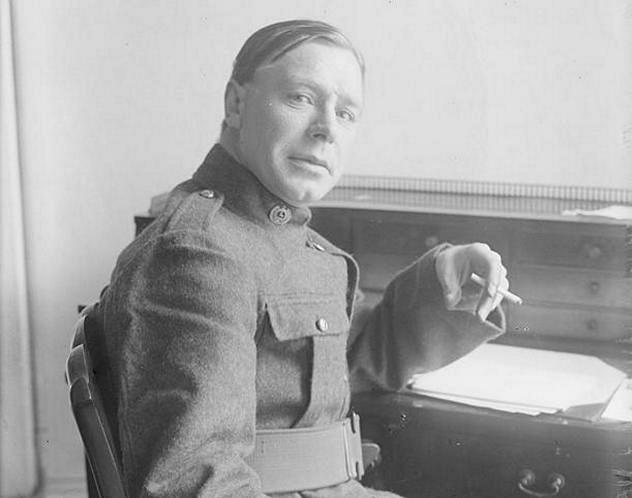
Albert Victor Grayson was an English politician, born in 1881. He was a socialist and was known as a funny, honest man with a good personality, which obviously made him quite unpopular with a lot of other high-ranking politicians. Although he was a Member of Parliament for three years, he generally found it hard to gain support from other politicians, and lost most elections he ran in. He toured for a number of years, giving speeches on many topics, including the corrupt political system at home. In these speeches, he frequently accused high-ranking individuals of corruption, including the Prime Minister, whom he accused of selling political titles. And, it turns out, he was correct in these accusations: A man named Maundy Gregory was selling honors for the Prime Minister.
In 1920, Grayson was believed to be on the verge of exposing a major conspiracy. In September of that year, he was attacked and beaten in an attempt to scare him into submission. But this tactic failed, as Grayson didn’t stop making speeches and threats to expose the truth. In late September, he got a phone call when he was having a night in with friends. He left, saying he had to go to a nearby hotel for a brief period, but it appears to have been a lie. He never went to the hotel, and instead went to the house of Maundy Gregory. Why he lied about where he was going is unclear. Only the previous year, Grayson had told friends that he knew Gregory was spying on him on behalf of British Intelligence. Not only does this make it clear that Gregory couldn’t be trusted, but it makes it even stranger that Grayson would lie about going to see what can only be described as an enemy, especially having been attacked just weeks before.
The witness who saw Grayson enter Gregory’s house was not just any passerby. It was George Jackson Flemwell, the man who had painted Gregory’s portrait, which means he knew exactly what Grayson looked like. This was the last time Grayson was seen. No conclusive clues were ever found as to what really happened inside the house. Gregory sold political honors for 12 more years, but when he was caught, he was able to get off by blackmailing the high-ranking officials he had sold them to. He is believed to be behind the “Zinoviev Letter,” which failed to help defeat the Labor party as intended, but did help bring about the collapse of the Liberal party. He is also a suspect in the death of actress Edith Rosse, who died days after changing her will to leave him £18,000. This occurred right after she refused to lend him money.
9Mary Boyle

On St. Patrick’s day, 1977, seven-year-old Mary Boyle was visiting her grandparents in County Donegal, Ireland. At one point, she followed her uncle, who was going to visit his neighbors, less than half a kilometer away. They were walking through a field, and when they got to a particularly marshy part, he sent her back to her grandparents’ house. She was never seen again.
How she disappeared in such a short space of time (less than five minutes) has been very puzzling for detectives, who continue to work on the case to this day. But the investigation was handled extremely poorly from the beginning. Despite a report that hair and clothes were visible in a nearby shallow grave in the days following Mary’s disappearance, that site was not examined until 2013. When it was investigated, police excavated it—not with care and forensic tools, but with a JCB excavator. No evidence was found, very possibly because it was destroyed after being carelessly uprooted after 36 years, instead of following procedure. Mary’s identical twin sister, Ann, has also been very active in trying to discover Mary’s fate. Unlike the twins’ mother, who holds out hope that her daughter is alive, Ann believes Mary was killed and that her body was destroyed in the dig.
One theory put forth is that Robert Black, a famous British child killer, is the culprit. Black spent of lot of time in Donegal in the 70s, and is believed to have tried to kidnap other children in the area. He was caught in 1990, after killing at least 19 girls throughout Europe, and is a key suspect in the death of a Northern Irish girl in 1981. While he could very well be the killer, nobody has been able to pin Mary’s disappearance on him yet. However, a number of officers from the NYPD came over last year to conduct an unofficial investigation, as one of them is from Donegal and has obsessed over the case for decades. They allegedly stated that they were 100 percent confident they solved the case, and passed their information on to the Irish police. However, that “100 percent” story originates from a tabloid, which may explain why nothing has come of it, almost a year later. Either way, because of the deplorable manner in which this case was handled, it may never be solved.
8SS Waratah
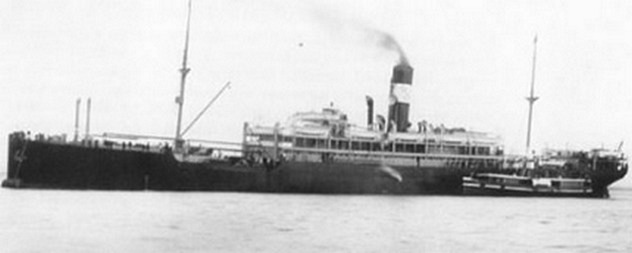
On July 26, 1909, the SS Waratah set sail from a stopover in Durban, South Africa, en route to Cape Town. It was an Australian passenger ship carrying 212 people, as well as some commercial cargo, sailing from England to Australia. What makes this story unique among maritime legend is that not one, but two people, who never met, had premonitions of doom about the Waratah. The first man was Claude Sawyer, who was actually traveling on the ship from England to Australia. During the journey, he had a vivid nightmare: A medieval knight rose from the sea screaming the ship’s name and vanished, at which point the ship was enveloped by waves and dragged underwater. This was enough to convince Claude to disembark in Durban, sending his wife a telegram stating that he left because he felt the ship was top-heavy and at risk of capsizing, but leaving out his dream.
The day after it left Durban, the Waratah communicated via Morse code with a ship called the Clan McIntyre, exchanging messages about the good weather conditions and wishing each other safe trips. Even when the seas got rough, the ships were in close proximity for hours. But just after 9:00 that morning, the Waratah changed course. Later on that day, the captain of the Clan McIntyre, C.G. Philips, saw an apparition that “brought to mind the legend of the Flying Dutchman” sailing off after the Waratah, and believed that the ship was doomed.
Two more ships, and one police officer on land, believe they spotted the Waratah that night. The first of these, the Guelph, communicated with it using signal lights, but only managed to catch the letters “T-A-H,” enough to figure out that it was the Waratah. The last to have seen what they believe was the Waratah were the crew of the Harlow, who reported that the Waratah was shrouded in smoke, and approaching their ship. But before it could get close, there was a pair of bright flashes. The Waratah was never seen again. While it is most likely that the ship exploded, the fact that two strangers both foresaw disaster for the ship—even making one of them leave it (a very expensive choice)—certainly makes the case of the Waratah more curious than many of the more famous stories.
7Lloyd Lionel Gaines
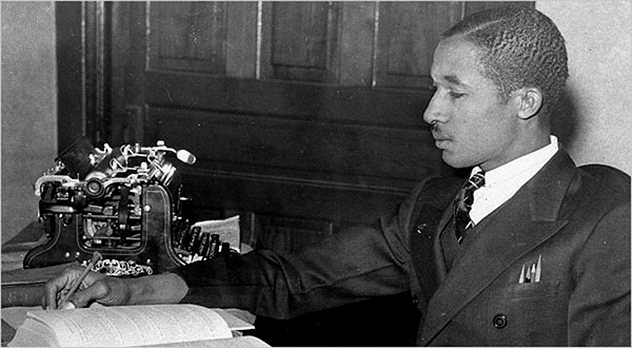
Lloyd Gaines was a man who is often forgotten, despite his landmark victory against the University of Missouri’s racial segregation policies. In the 1930s, Missouri would pay tuition fees for black students to study law, but only if they studied in other states. So in 1936, Gaines began legal proceedings against the University of Missouri. The case went on for three years, during which time he earned an economics degree from the University of Michigan. But his dream was to become a lawyer. In 1939, the Supreme court ruled in his favor, paving the way not only for him to fulfill his dream, but also for the desegregation of universities nationwide.
Later that year, people say that Gaines began to act strangely—a matter of opinion that’s hard to prove. But what most will find odd and can be proven is that Gaines went out one night to buy stamps, despite the fact that it was pouring rain, and was never seen again. While many people obviously speculated that he was captured and killed as part of a hate crime, his mother didn’t believe this was the case. She believed he would come home when he wanted, so she never filed a missing-person report. Whether she knew something we don’t, or she just didn’t want to accept the death of her child may never be known.
6Ellen Austin
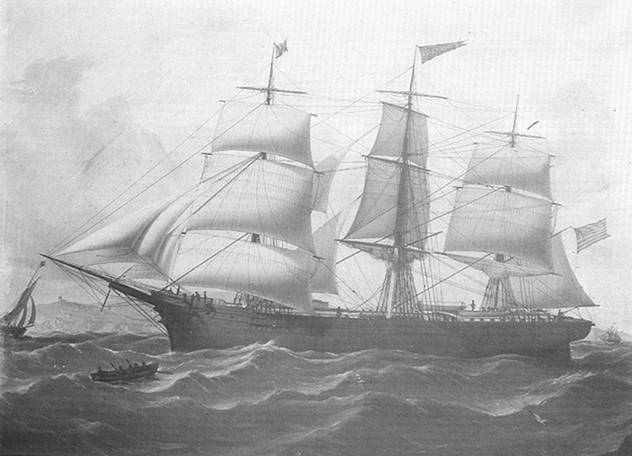
In 1881, the Ellen Austin set sail from England to journey to New York. A month later, its journey was coming to a close. But as it was sailing through the Bermuda Triangle, it was surrounded by a mist so thick that visibility was severely compromised. The crew began sailing slower, and a lookout was positioned in the crow’s nest. Not long later, the lookout declared that he could see a ship. The rest of the crew were unable to see through the fog, but called out to it nonetheless. Although no replies came, they could still hear the other ship, and stayed relatively close by. When the fog eventually cleared, they realized that the other ship was abandoned.
Captain Baker of the Ellen Austin ordered six of his men to board the ghost ship and sail it to New York, alongside the Ellen Austin. The captain’s log and the trail boards were missing from the second ship, meaning its name could not be known, although Captain Baker believed it probably came from Honduras. So the Ellen Austin and the mystery ship set sail, and had a pleasant few days, until a storm hit and forced them apart. After the storm, the unnamed ship had vanished. Captain Baker soon spotted it, and, after chasing it for several hours, the Ellen Austin caught up, and found that it was, once again, empty. The six men of Ellen Austin were gone. A reluctant crew was convinced by their captain to board the empty ship, on the condition that they were given guns. The two ships set sail in close proximity once again. A few hours later, another fog set in, and the unnamed ship disappeared for good, along with its third crew.
5Marlborough
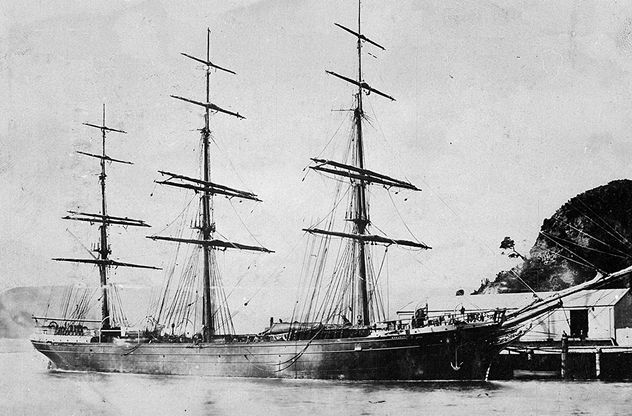
The Marlborough was an enormous, dual-purpose ship built in the late 19th century. It traveled between Britain and New Zealand, acting as a passenger ship to New Zealand and a cargo ship to Britain. It set sail from New Zealand in January, 1890, with 33 crew members and a small number of passengers on board. By April of that year, it had not arrived in Britain and was reported missing. Many theories surround its ultimate fate. One ship claimed to have seen stranded sailors on a Chilean island in the southernmost tip of South America the following year, but were unable to help them due to stormy weather. Now the thing about ship mysteries is that a lot of them can be “solved” by acknowledging the fact that either the missing people fell overboard, or the ship sank. The Marlborough mystery, however, is nowhere near that simple.
You see, the ship was eventually found . . . 23 years after it disappeared. In 1913, a shipwreck was discovered by another crew in Puntas Arenas, Chile. They boarded the Marlborough, which had run aground onto an extremely craggy island. Two crew members boarded the ghost ship, and were horrified at what they found. All in all, about 20 skeletons were found on board, and in a lot of different locations. One was found alone, directly under the wheel, and another one found alone on the bridge, with five more nearby. No less than three skeletons were found by the ladder leading below the deck. The largest group found in a single area consisted of 10 skeletons, in what is known as the “mess-room”—the main social quarters of the ship. It is these skeletons that give this case such an air of mystery. There was no evidence of foul play, which makes the placement of the skeletons extremely baffling. They obviously died at the same time, because you wouldn’t leave dead bodies just lying around the ship.
So how did three people die in the hatchway at once? It might suggest to some that they were running from something, but remember that bodies were found in different locations all over the ship, which says they weren’t rounded up by anyone and killed. Another fact to remember is that a person, most likely the captain, was found under the steering wheel. Steering really wouldn’t be a high priority if your crew was being killed. And apart from the fact that no damage to the bodies was reported, the captain had his sword right by him. Why wasn’t this used, and then later looted? Why wasn’t anything looted? And if the ship had simply run aground, everyone would have gotten off. “Marlborough, Glasgow” could be read on the ship. So, according to the reports, we seem to know for sure that this is the ship that was missing for 23 years. But that’s all we really know. Curiously, of the several crews that have claimed to have found the Marlborough, none have reported its location specifically enough for it to be found by modern crews. Take from that what you will.
4William Cantelo
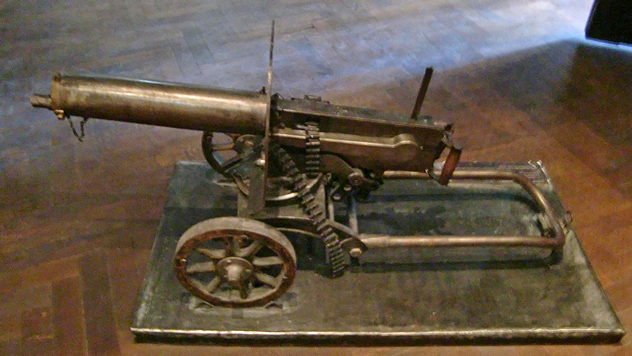
William Cantelo was an inventor in 19th century England. A pub owner from Southampton, he used to experiment in his cellar, and in the early 1880s, his experiments were getting increasingly noisy. But what is an easily identifiable sound to almost all of us was probably extremely strange to Cantelo’s neighbors. You see, Cantelo was busy working on the world’s very first machine gun. Eventually, he announced to his family that he had completed it. Reports conflict on whether he and his sons went to the United States to sell his invention, or whether he left alone on an extended vacation. It’s most likely the latter, seeing as after he left, Cantelo disappeared (while his sons remained in England). A private investigator was hired by Cantelo’s family, and traced him to America. The fact that Cantelo had taken out quite a bit of money from his bank account may have helped the investigator, but the investigation came to a dead end in America. No trace of Cantelo was ever found again.
However, plenty of evidence surrounded American-born Hiram Maxim. This guy was certifiably alive and well. This is important not because some people suspect that he killed William Cantelo, but because many believe he was William Cantelo. It wouldn’t have been too hard to create a new identity back then, and it could certainly explain what happened to Cantelo. There are a few reasons people believe they were one and the same. For starters, Maxim invented the Maxim machine gun—the first portable, fully automatic gun—in the mid-1880s, just a few years after Cantelo disappeared. Secondly, a photo of Maxim was given to his sons, who were certain that it was their father. They found him one day at a train station, and tried to catch up to him, but the train drove off, taking away Maxim and the two boys’ hopes of finding out the truth.
Maxim eventually moved (back?) to England, and died an extremely wealthy family man, having invented the mousetrap, hair curler, inhaler, sprinkler, and much more. He even had a long-standing dispute with Edison over who invented the lightbulb. In his autobiography, he claimed that someone was impersonating him. Was this “Maxim” actually Cantelo in disguise, and trying to discredit the real Maxim? Or was Maxim a completely fake identity fabricated by Cantelo in order to make off with millions and create a new life for himself? Or maybe Maxim killed Cantelo and stole his invention? The truth may never be known.
3Lucy Ann Johnson

Mother of two, Lucy Ann Johnson from Vancouver, Canada, was reported missing by her husband Marvin in 1965. However, she had, in fact, been missing since 1961. Because this report came four years late, Marvin Johnson was a prime suspect in what was believed to be a homicide. His back yard was excavated, but no evidence of foul play was found, and the case faded into obscurity, until it was featured in the Royal Canadian Mounted Police series “Missing of the Month” last year. This renewed interest in the case prompted Linda Evans, Lucy and Marvin’s daughter, to do some home investigating. Linda was only seven years old when her mother disappeared, and had always held on to the hope that she was alive somewhere. Linda’s father and brother had both passed away at this stage, so she had few leads. Because her mother had been raised in Yukon, Linda placed an ad in a local paper with a photo, her grandparents’ names, her mother’s date of birth, and an email address, in the hopes of finding someone who could shed some light on the disappearance.
On July 12, Howard Glenn saw the ad and rang his sister, Rhonda, who emailed Linda Evans. Howard and Rhonda were able to identify the picture of Lucy Ann Johnson, because not only was she alive and well, she was their mother. After a 52-year gap, phone calls were made between Linda and Lucy, and Linda soon flew to Yukon and met her mother and half-siblings. While you might expect Linda to have harbored some animosity toward the woman who never attempted to contact her, she was just happy to have a family again. Lucy said the reason she left was that Linda’s father was abusive. Linda knew her father was an alcoholic, but had never experienced any physical abuse from him. While she doubts her mother’s claims, she’s happy to forget the past and just enjoy their time together now.
2Richard Cox

Richard Colvin Cox was a cadet in the US Army, stationed in West Point, New York, in 1950. On January 14, he disappeared. He had told his fellow cadets that he was going to dinner with his friend George, who was never found despite extensive investigations by the police. Many theories abound as to what became of Cox, from joining the CIA to being imprisoned by the Soviets. Perhaps the most compelling is the he staged his own disappearance in order to run away with another male cadet. Despite the fact that Cox was engaged, evidence was found from both government files and firsthand interviews to suggest that Cox had same-sex encounters with other cadets.
In 1986, an anonymous letter was sent to a retired man who devoted much of his time to investigating Cox’s disappearance. The letter suggested that Robert Frisbee, who was a prime suspect in a separate murder case, was a person of interest. Following up on this lead revealed that Frisbee had previously been known as Robert Dion, and had been stationed with Cox. Furthermore, Dion had previously been involved in a fake-ID ring, so it’s possible that he not only created a new identity for Cox, but could have been masquerading as a man named George at the time of the disappearance. “George” had previously been seen visiting Cox before the night he disappeared, and descriptions of him matched up with Dion. Many people believe Cox actually lived an entirely new life and may still be alive today. He would be 85 years old.
1Jacque Verges

Jacque Verges was one of France’s most controversial lawyers, until he died of a heart attack in August last year. He was nicknamed “The Devil’s Advocate” for taking on clients like Nazi war criminal Klaus Barbie, and terrorist Djamila Bouhired, whom he saved from from being sentenced to death for bombing innocent people. Because of cases like these, it should come as no great surprise that Verges was well known by the public and closely watched by the media. It would be natural to assume that when he went missing in 1970, it was by the hand of one of the countless enemies he likely racked up over the years. Only we know for certain that that’s not what happened, because eight years after disappearing, Verges reemerged and carried on with his life as if nothing happened. He began practicing law again in 1979, still defending the worst people he could find, such as his old friend Khieu Samphan, who was convicted of committing genocide while he led the Khmer Rouge, a Cambodian communist party.
Many theories have been put forward as to where Verges was for those eight years. Some say he was an advisor to Pol Pot, another former leader of the Khmer Rouge, who was in power from 1975 to 1979. Others claim he was trained by the KGB. Verges himself never explained where he was for those eight years, simply saying that he was on holidays “very much to the east of France.” He also said he enjoyed reading his own obituaries, and the fact that nobody had any idea where he lived for almost a decade.
Simon is a 22-year-old university graduate who likes to adhere to Irish stereotypes, such as drinking and loving the potato, and hopes at least one person got the Father Ted reference. You can follow him on Twitter, or like his extremely long tongue on Facebook to see if he can break the world record.








